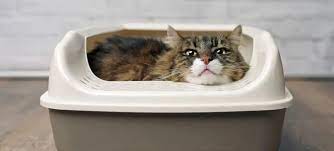Understanding Why Animal Waste Must Not Be Flushed Down the Toilet
Understanding Why Animal Waste Must Not Be Flushed Down the Toilet
Blog Article
They are making a few good points about Should you flush animal waste down the toilet overall in this article on the next paragraphs.

When it concerns getting rid of waste, especially animal waste, lots of people usually consider the hassle-free choice of flushing it down the toilet. However, this relatively very easy remedy can have serious repercussions for the environment and public health. In this post, we'll explore why flushing pet waste down the commode is a bad concept and offer different approaches for correct disposal.
Intro
Correct waste disposal is important for keeping environmental sustainability and public health. While it might seem harmless to flush animal waste down the commode, it can bring about different concerns, both for the environment and human wellness.
Threats of flushing pet waste
Environmental effect
Purging animal waste introduces damaging bacteria and microorganisms right into waterways, which can negatively influence marine ecological communities. These microorganisms can infect water resources and injury aquatic life, interfering with fragile ecosystems.
Public health worries
Pet waste consists of dangerous microorganisms such as E. coli and Salmonella, which can posture major wellness dangers to people. Flushing pet waste down the commode can pollute water supplies, causing the spread of diseases and infections.
Alternatives to flushing
Instead of flushing animal waste down the toilet, there are a number of alternative disposal approaches that are more environmentally friendly and hygienic.
Composting
Composting pet waste is a green means to deal with it. By composting, organic matter is broken down into nutrient-rich soil, which can be utilized to fertilize yards and plants.
Land fill disposal
Getting rid of pet waste in a land fill is another alternative. While not as environmentally friendly as composting, it is a more secure alternative to flushing, as it prevents the contamination of water resources.
Animal waste disposal systems
There are specialized animal waste disposal systems available that securely and hygienically throw away animal waste. These systems commonly utilize enzymes to break down waste and get rid of odors.
Steps to correct pet waste disposal
To ensure appropriate disposal of animal waste, adhere to these steps:
Scooping and getting waste
On a regular basis scoop and bag pet waste making use of naturally degradable bags. This prevents waste from infecting the setting.
Using assigned waste bins
Dispose of bagged animal waste in designated waste bins, such as compost containers or land fill containers. Stay clear of flushing it down the commode at all costs.
Cleaning can and family pet areas regularly
Routinely tidy litter boxes and pet areas to prevent the accumulation of waste and bacteria. Use pet-safe cleansing products to preserve hygiene.
Advantages of proper disposal techniques
Taking on proper disposal techniques for pet waste offers a number of benefits:
Decreased environmental pollution
Proper disposal approaches minimize the threat of environmental pollution, safeguarding rivers and environments from contamination
Minimized risk of water contamination.
By avoiding flushing animal waste down the toilet, the risk of water contamination is considerably lowered, safeguarding public health.
Boosted hygiene and hygiene
Correct disposal techniques promote much better sanitation and health, creating a much safer environment for both people and pets.
Final thought
Finally, flushing animal waste down the bathroom is unsafe to the environment and public health. By embracing different disposal methods and complying with appropriate waste monitoring practices, we can reduce the negative influence of animal waste and add to a cleaner, much healthier planet.
What To Do With Dog Poo – The Do's And Don'ts Of Disposing Of Faeces
Dog poo bins
Some councils provide dedicated dog waste bins in popular dog-walking areas that can take dog poo that has been bagged but you can legally dispose of dog waste in any public litter bin, as long as it is securely bagged. This also applies to your wheelie bin at home.
Do not flush
Water companies do not recommend flushing dog faeces down the toilet because certain parasites can survive the water processing treatment and are potentially harmful to humans. You should also never consider flushing dog poo that has been bagged down the toilet as the bags will not break down and instead create severe blockages in the sewage system.
In the woods
The Forestry Commission promotes a ‘stick and flick’ method for dealing with waste in the woods. This means finding a stick and using it to flick any poo from off the path so that it is out of the way of other walkers. You could also bury it as long as it is not in an area where there might be livestock.
Livestock
Parasites found in dog poo can be transmitted to livestock if they inadvertently eat infected faeces that has been left on grazing land. This could result in the death of sheep or abortion in cattle so you should always make sure you pick up your dog’s waste in fields where livestock could be present.

Routinely tidy litter boxes and pet areas to prevent the accumulation of waste and bacteria. Use pet-safe cleansing products to preserve hygiene.
Advantages of proper disposal techniques
Taking on proper disposal techniques for pet waste offers a number of benefits:
Decreased environmental pollution
Proper disposal approaches minimize the threat of environmental pollution, safeguarding rivers and environments from contamination
Minimized risk of water contamination.
By avoiding flushing animal waste down the toilet, the risk of water contamination is considerably lowered, safeguarding public health.
Boosted hygiene and hygiene
Correct disposal techniques promote much better sanitation and health, creating a much safer environment for both people and pets.
Final thought
Finally, flushing animal waste down the bathroom is unsafe to the environment and public health. By embracing different disposal methods and complying with appropriate waste monitoring practices, we can reduce the negative influence of animal waste and add to a cleaner, much healthier planet.
What To Do With Dog Poo – The Do's And Don'ts Of Disposing Of Faeces
Dog poo bins
Some councils provide dedicated dog waste bins in popular dog-walking areas that can take dog poo that has been bagged but you can legally dispose of dog waste in any public litter bin, as long as it is securely bagged. This also applies to your wheelie bin at home.
Do not flush
Water companies do not recommend flushing dog faeces down the toilet because certain parasites can survive the water processing treatment and are potentially harmful to humans. You should also never consider flushing dog poo that has been bagged down the toilet as the bags will not break down and instead create severe blockages in the sewage system.
In the woods
The Forestry Commission promotes a ‘stick and flick’ method for dealing with waste in the woods. This means finding a stick and using it to flick any poo from off the path so that it is out of the way of other walkers. You could also bury it as long as it is not in an area where there might be livestock.
Livestock
Parasites found in dog poo can be transmitted to livestock if they inadvertently eat infected faeces that has been left on grazing land. This could result in the death of sheep or abortion in cattle so you should always make sure you pick up your dog’s waste in fields where livestock could be present.
I recently found that piece on 4 Reasons Why Dog Poop Cleanup is Important while doing a lookup on the search engines. Sharing is good. Helping people is fun. We cherish reading our article about Why you should never flush dog poop down the toilet.
Request Service Report this page